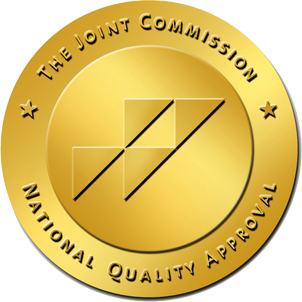
Going to college or university is, for many people, their first real time spent away from home, away from rules and restrictions of parents, and their first time on their own. For many, it’s also a period of increased stress, with study deadlines, pandemic stress, and peer pressure that hits in different ways than high school. That all combines to create an environment in which higher education students are expected to drink and use drugs – to the point where 86% have used drugs or alcohol to manage or cope with stress on more than one occasion. That’s without considering statistics like drinking to party or to fit in, using prescription stimulants, or smoking relaxants like marijuana. That’s also important, considering 31.4% of young adults aged 18-24 (which coincides with college age) abuse alcohol and 34.5% of that age group abuse illicit drugs.
That compares to about 16.3% of populations aged 26 and up for illicit drugs and 22.9% for alcohol. So, college age people are significantly more likely to abuse hard drugs and alcohol – and that often coincides with time spent on campus.
Why Drugs and Alcohol on Campus?
If you or a loved one are going to college or university, it’s important to understand that drugs and alcohol are a risk. They’re also incredibly common. You might feel peer pressured into them, you might use them to cope with stress, and you might use them to enhance your ability to focus and study before tests. Even people who go to campus with no intent to ever start using drugs or alcohol eventually do so and many do develop significant problems with those substances. Eventually, no decision-making is ever straightforward, and many have interconnecting reasons like mental health, stress levels, friends, support networks, social conditions, etc.
For example, many young people start out exploring drinking or using drugs as part of freedom from family and parental rules. While much of that exploration is often done in high school – living on campus offers a total freedom that can be a heady first-time experience. With no one to say no, exploring going to parties and drinking can be about exploring personal freedom and discovering boundaries and limitations. To an extent, that’s perfectly normal and healthy. At the same time, it can also put people at risk of over-exposure and eventually developing dependencies on drugs and alcohol.
That becomes increasingly true as students also have to face stress. For example, many are living away from home for the first time. That separates you from support networks and family at a point in time when you face more responsibility than ever before. That’s especially true for those with high-stress majors or who are holding jobs while going to classes. Time spent at university can be an endless round of constant work and study – which for many, is their first experience with that.
At the same time, students increasingly face new forms of stress and pressure. Social media, success culture, and entrepreneur culture all push students to be constantly at work, constantly “on”, and good at everything. For women, that can translate to expectations to spend hours on hair and makeup before class – despite workloads that don’t allow for this kind of time investment.
When paired with the demand to study, to achieve good grades, and often to meet significant expectations from family, friends, and social media – the stress can be overwhelming. Many eventually use “performance enhancing” drugs or alcohol to reduce stress just to cope.
Of course, stimulants like Adderall and Ritalin are also popular as study drugs. Here, many students take these just when studying or before a test. Few use them consistently enough to become addicted. However, that statistically works out to thousands of students each year.
How Common are Study Drugs
While everyone is aware that most students (4 out of 5) drink, fewer people know just how common study drugs are. Yet, 15-18% of all college students use prescription drugs and amphetamines to enhance performance. In fact, 26% of college students in a survey admitted to using these kinds of drugs 8+ times while studying. That becomes significantly worse in specific fields like law and medicine, where an average of 20% of students use study drugs. And, despite the fact that study drugs are often addictive and dangerous, many students see them as safe.

That’s often because they’re prescription drugs and a very high percentage of the population. In fact, with about 2.5 million adult Americans holding Ritalin or Adderall prescriptions, these types of drugs are one of the most commonly used in the U.S.
“Study drugs” are often used to enhance concentration. For some, that means using illicit drugs before big or important tests. For others, it means using these types of drugs to account for feeling bad or hungover after indulging too much in other substances. That can be a dangerous and self-reinforcing cycle for some, as people take Ritalin to be alert enough to study, use alcohol to relax and sleep after, and then need more Ritalin to cope with the aftereffects the next day.
Substance Abuse and Getting Help
Today, some 40.3 million Americans are addicted to drugs or alcohol. College students make up a significant portion of persons with substance use disorders, as they are among the most frequent users of illicit substances. Most importantly, with high exposure to stress, low stability in living conditions, and high pressure from peers and social media, today’s students are under more pressure than ever. That increases the risks of both substance abuse and addiction.
Getting help often means taking time away from studying, which can be difficult for many. However, college and university offices frequently offer assistance, counseling, and even substance abuse treatment programs. In other cases, seeking out a substance use disorder program outside of university is a better option – as it allows you to either get ongoing help with an outpatient program or to take a break from the stressful environment of studying to get dedicated treatment.
In either case, substance use disorders are about behavioral addiction and reliance build on chemical addiction. If you simply quit and go through withdrawal on your own, the chance of relapse is still high, because you haven’t worked on the behavioral addiction, cravings, and the reason drugs or alcohol were used in the first place. Behavioral therapy, counseling, and other interventions can help by building better coping mechanisms, by improving how you deal with stress, and by assessing and working to replace the behaviors that led to substance abuse in the first place.
If you or someone you know is struggling with drugs or alcohol, it’s important to take action. Drugs and alcohol are extremely common on campuses. But, they’re also dangerous, they prevent people from graduating and slow down career goals, and they cause physical and mental health harm that can last for years after the person actually quits. Getting help and treatment can mitigate that as much as possible, so you or your loved one get back to your life.
If you or your loved-one struggles from substance abuse please contact us today to learn more about our detox and residential treatment. We’re here to help you recover.






